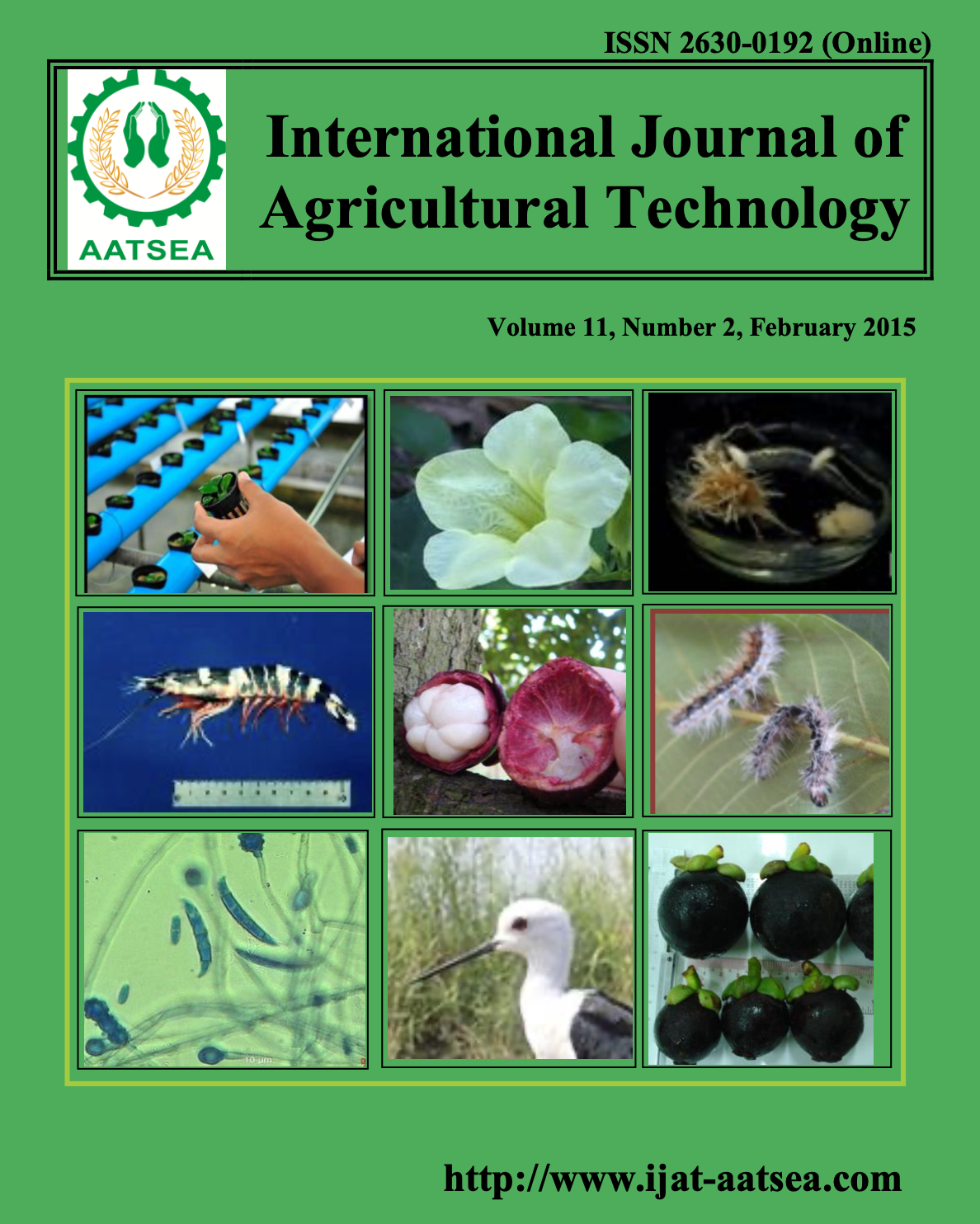Structure and distribution of demersal fish in Moo-KhoBulon, Satun province, Thailand
Main Article Content
Abstract
The study found there are various species up to 69 species of fish, 64 species groups are 2 species of groups, squid, crab, crayfish 3 species, grasshoppers only 1 species. Dominants Species is found on the island of Mo Kho Bulon, Satun Province by number Species is found Sillago sihama of 1,112 characters (representing 55.54%), followed by Netuma thalassinus 104 characters (equivalent to 5.19%), sand, white sandfish Scolopsis taenioptera the number 83 (or 4.15%), Upeneus luzonius of 79 characters (equivalent to 3.95%), respectively. Dominants Species is found on the island of Mo Kho Bulon, Satun Province by weight.Species is found on the island of Mo Kho Bulon, Satun Province by weight were found that fish with Sillago sihama total weight of 40,955.70 grams (equivalent to 52.39%), followed by fish spines Netuma thalassinustotal weight of 6268.60 grams (equivalent. 8.02%), white fish Scolopsis taeniopteratotal weight of3707.80grams (equivalent to 4.74%), respectively. Sillago sihama total weight of 40,955.70 grams (equivalent to 52.39%), followed by fish spines Netuma thalassinus total weight of 6268.60grams (equivalent. 8.02%), Saitama, sand fish, white fish Scolopsis taenioptera total weight of 3707.80 grams (equivalent to 4.74%), respectively. Standing Crop with an average of 125.07 kg. per hectare. By most in the month of July2012 was 200.05 kg. per hectare. And lowest in May was 45.19 kg. per ha. The catch per unit effort with nets caught fish (CPUE) from this study at the fishery on average 6 hours showed an effect catch average of 2.61 kg. per hour. The study found that The index species (richness index) of the month of July2012 with a variety of species, most, followed by the June 2012 January 2013 March 2013 and May 2012 respectively. The island of Mo Kho Bulon, Satun Province. Average water quality the salinity of the water was 30 ppt, pH was7.8 and the average DO was 5.9 mg / L average water depth of 12 meters and an average water temperature of 30 ° C.
Article Details

This work is licensed under a Creative Commons Attribution-NonCommercial-NoDerivatives 4.0 International License.
References
Caddy, J. F. and Sharp, G. D. (1986). An ecological framework for marine fishery investigations. Food and Agriculture 283:155.
Dalley, E. L. and Anderson, J. T. (1993). Distribotion and abundance of Demersal Juvenile cod from inshore to offshore locations on the Northern Grand Bank and NE New foundland shelf. pp. 9.
Hajisamae, S., Chou, L. M. and Ibrahim, S. (2004). Feeding habits and trophic relationships of fishes utilizing an impacted coastal habitat, Singapore. Hydrobiologia 520:61-71.
Hajisamae, S., Yeesin, P. and Ibrahim, S. (2006). Feeding ecology of two sillaginid fishes and trophic interrelations with other co-existing species in the soutern part of South China Sea. Environmental Biology of Fishes 76:167-176.
Kimani, E. N., Mwatha, G. K., Wakwabe, E. O., Ntiba J. M. and Okoth, B. K. (1996). Fishes of a shallow tropical mangrove estuary, Gazi, Kenya. Marine and Freshwater Research 47:857-868.
Messieh, S. N. (1989). Changes in the Gulf of St. Lawrence herring populations in the past three decades. NAFO Scientific Council Research Document 1655:1-47.
Mbande, S., Whitfield, A. and Cowley, P. (2005). The ichtyofaunal composition of the Mngazi and Mgazana estuaries: a comparative study. Smithiana 4:1-20.
Therriault, T. W. and Kolasa, J. (1999). Physical determinants of richness, diversity evenness and abundance in natural aquatic microcosms. Hydrobiologia 412:123-130.
Vidthayanon, C. and Premcharoen, S. (2002). The status of estuarine fish diversity in Thailand. Marine and Freshwater Research 53:471-478.


